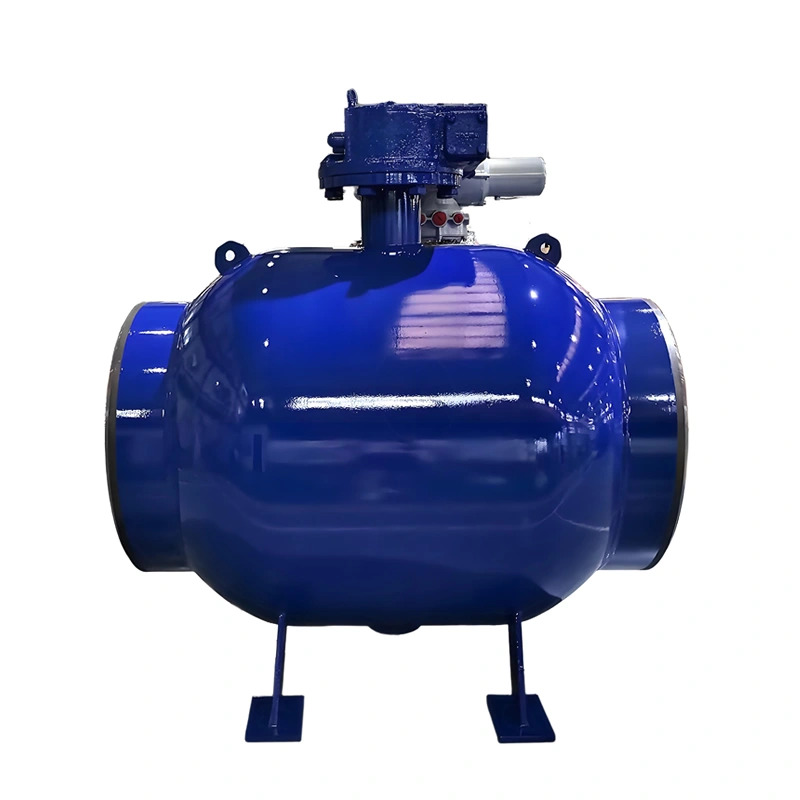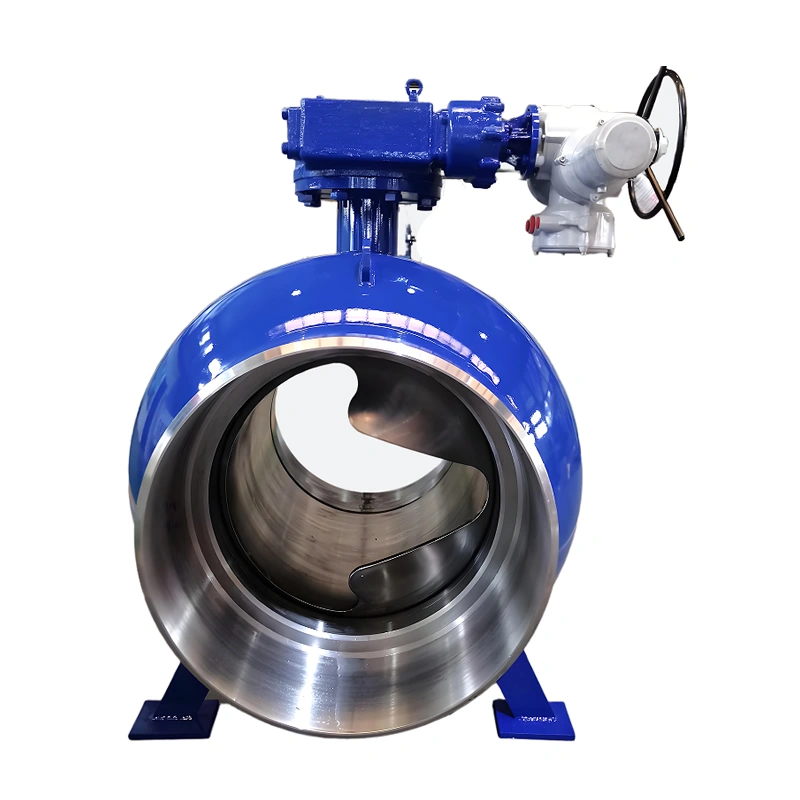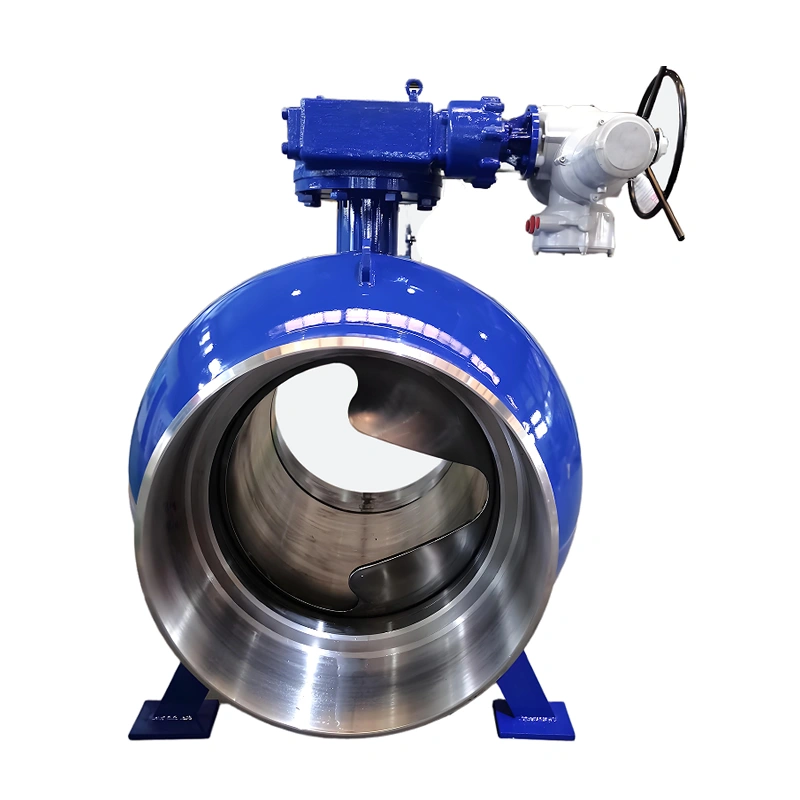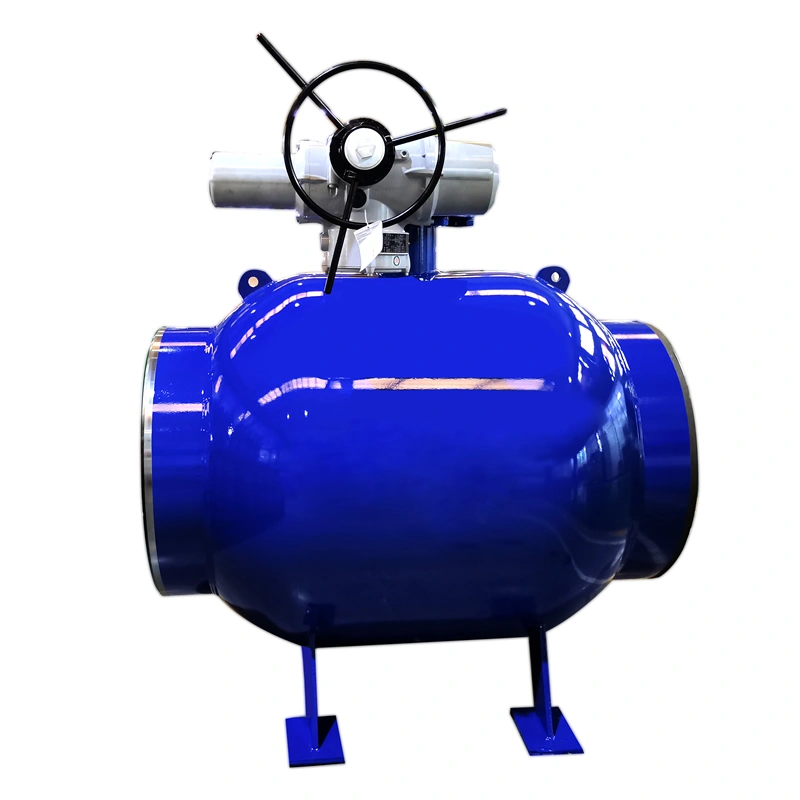- 2″~56″
- Ball
- General
- Electric actuator
- Normal Temperature
- Oil Water Steam
- Cast steel
- 29 to +200°c
- PN16-PN42
- PTFE
Specification
Electric Worm Gear Wcb Carbon Steel Regulating Control Fully Welded Ball Valve Pn25 Dn800 Dn1200
Newway full-welded electric worm gear gate valve, through advanced welding technology and integrated design, delivers reliable fluid control for harsh industrial conditions. With deep customization and comprehensive services, it helps clients achieve safe, efficient, and intelligent system operations, setting a benchmark in high-pressure fluid control applications.
Product Overview
Newway Full-Welded Electric Worm Gear WCB Carbon Steel Gate Valve: The Sturdy Choice for Industrial Fluid Control
I. Core Analysis of Full-Welded Technology
(A) Advantages of Welding Processes
Newway full-welded electric worm gear WCB carbon steel gate valve abandons traditional flange connections, adopting a full-welded structure. The welding combines automated TIG (Tungsten Inert Gas) and SAW (Submerged Arc Welding) processes:
Automated TIG Welding is used for root pass welding of critical valve parts, precisely controlling heat input to ensure fusion quality. It forms a uniform, dense weld root to avoid defects like porosity and incomplete penetration.
SAW Welding is applied for filling and capping, featuring high efficiency, beautiful weld formation, and large penetration depth, ensuring high-strength and excellent mechanical properties of the welds.
This combined welding process integrates the valve body and bonnet into a solid whole, fundamentally eliminating potential leakage hazards from flange connections and improving sealing performance by over 60%.
(B) Welding Quality Control
Newway establishes strict quality control systems:
Pre-Welding Treatment: WCB carbon steel base materials undergo rigorous pretreatment, including surface grinding and cleaning to remove oil, rust, and impurities, ensuring cleanliness of welding joints. Environmental temperature and humidity are precisely controlled.
Real-Time Monitoring: Weld tracking systems monitor weld position and parameters (current, voltage, speed) in real time, automatically adjusting to ensure uniform weld formation.
Nondestructive Testing: All welds undergo 100% UT (Ultrasonic Testing) and RT (Radiographic Testing):
UT detects internal defects like cracks and slag inclusions with high sensitivity.
RT visually displays defect shape, size, and position, ensuring compliance with ASME BPVC standards.
II. Product Performance Enhancement Based on Full-Welded Technology
(A) Excellent Sealing Performance
The full-welded structure eliminates vulnerable sealing components like flange gaskets, avoiding leakage caused by gasket aging. It maintains zero leakage under high pressure (PN100, 10.0MPa) and high temperature (425℃), meeting strict requirements of industries like petrochemical and natural gas transportation. For example, in natural gas long-distance pipelines, zero leakage ensures safe and efficient transportation.
(B) High Strength and Long Service Life
Full-welded technology grants 30% higher structural strength than traditional flange valves, evenly bearing medium pressure and external loads to reduce stress concentration. Tested in high-temperature and high-pressure steam pipelines of the metallurgy industry, it withstands steam erosion and pressure fluctuations with a service life exceeding 10 years—1.5 times that of conventional valves—reducing replacement and maintenance costs.
(C) Adaptability to Harsh Environments
The integrated full-welded design, combined with surface anti-corrosion treatment (e.g., epoxy coating), enhances resistance to corrosion and environmental erosion. Eliminating flange gaps reduces corrosion medium infiltration, making it ideal for coastal chemical plants and offshore oil platforms, where it withstands seawater corrosion and sea breeze erosion for long-term stable operation.





